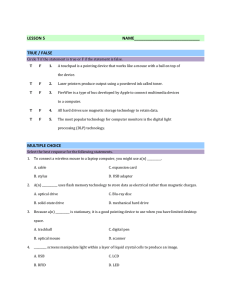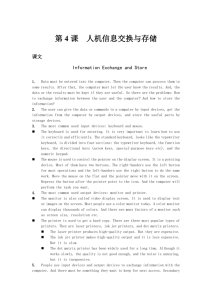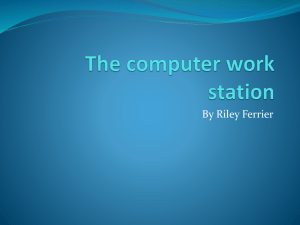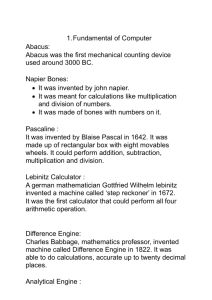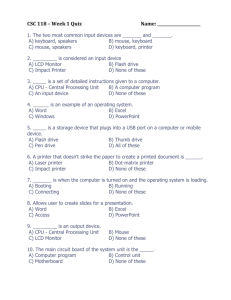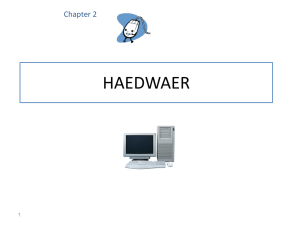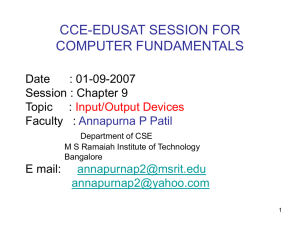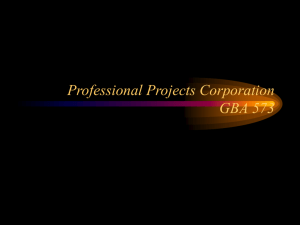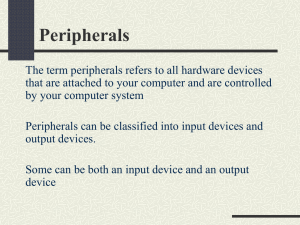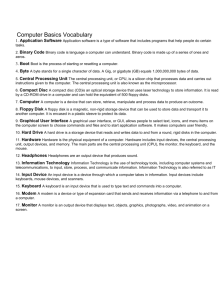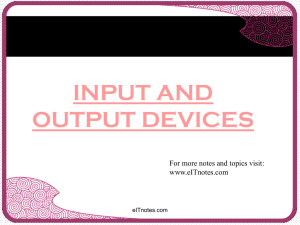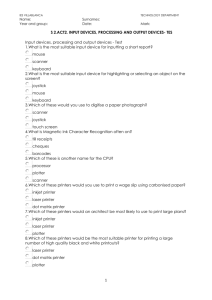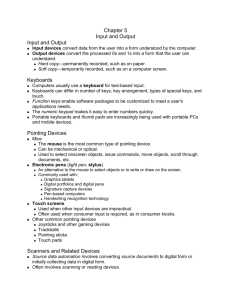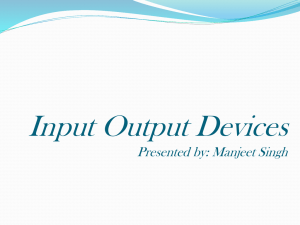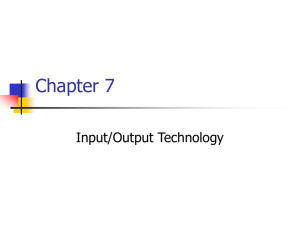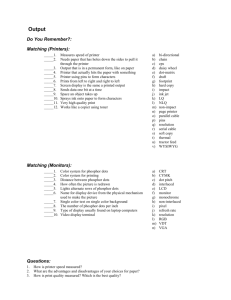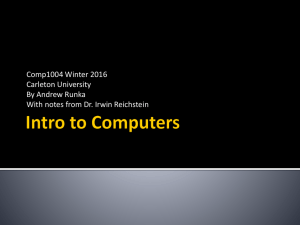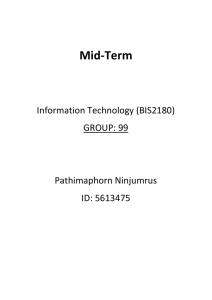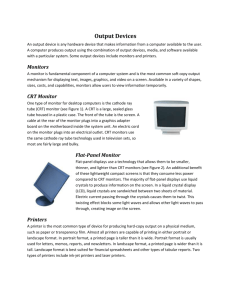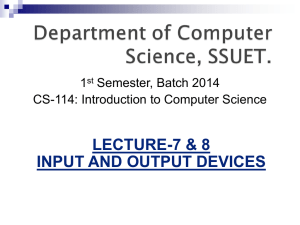Input/Output Devices
advertisement
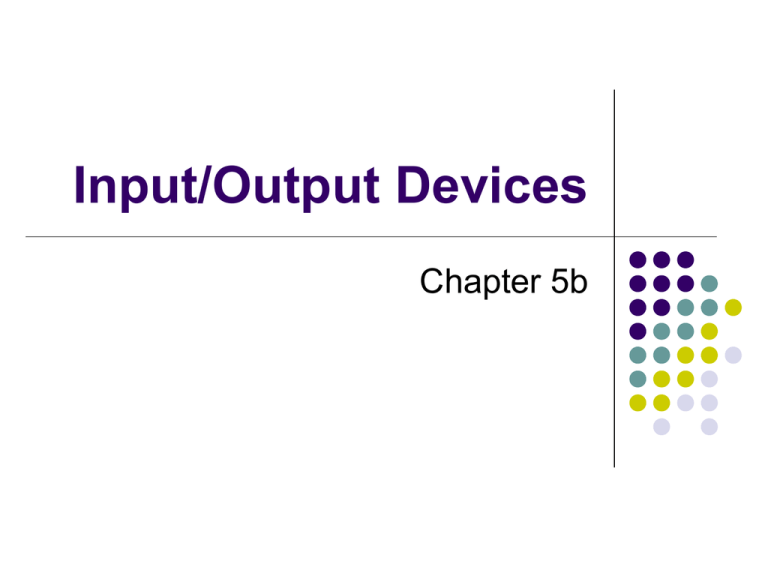
Input/Output Devices Chapter 5b Input Allow input into computer Data Commands Responses Programs Most popular input devices are keyboard and mouse Keyboard Features QWERTY layout 12 function keys Numeric keypad Cursor control key Special function keys Connectors PS/2, USB, IrDA (wireless infrared) Mouse Point-and-draw device Used in GUI interfaces Controls on-screen pointer or cursor Click, double-click, drag Mechanical mouse use ball pushed over flat surface to generate mouse positions Optical mouse uses low laser (LED) to generate mouse positions Other types include trackballs, track points, track pads, joystick and digital pen Connectors are PS/2, USB or IrDA Data Source Automation Reduces input errors Computer generates data entry information at the source f the data Scanners used to read the data eliminating need for key entry Best known example is UPC or universal product code Data Source Automation Other types MICR,or magnetic ink character recognition = used by banks to encode bank and account information on checks OMR, or optical mark recognition. Best example is scantron used in tests and surveys OCR, or optical character recognition. Reads both printed and written text. Used by mail services to read addresses and zip codes Turnaround document are sent to customers and returned with payments Other inputs Magnetic stripe cards Data encoded on magnetic stripes ATM cards, credit/debit cards, badges Speech recognition or voice input. Requires special software and quality microphone Digital cameras and video recorders allow input of digital pictures and videos. Output Output information from computer in form we can read Text, graphics, audio, video Most popular output devices are monitor and printers Monitor = “soft copy” Printer = “hard copy” Monitors Two basic technologies = CRT and flat panel CRT = cathode ray tube Older technology Inexpensive Bulky and power hog Use same technology as TV picture tubes Flat panel Essential for laptops Gaining popularity with desktops Light, portable, power misers More expensive Most popular technology is LCD or liquid crystal display Monitors (contd) Require graphics adapter Converts digital signals to format compatible with monitor Cards may be integrated into motherboard or use AGP expansion slot Cards have their own VRAM or video RAM and processor chip Resolution = picture quality Pictures displayed as pixels or dots on screen Higher number of pixels = better resolution Lower dot pitch (distance between pixels) = better resolution Printers Two categories – impact and non-impact Impact printers Older technology Print head strikes paper Noisy, lower quality output Advantage is the ability to print carbon copies (with appropriate paper!) Best example is dot-matrix printer Printers (contd) Non-impact Print heads do not touch paper Quiet, higher quality printout Ink-jet printer Sprays ink droplets on paper to form text and graphics Energy efficient Refill cartridges are expensive Laser printer or page printer Same toner technology as copy machines Produce one page at a time Faster than ink jet printers but power hogs Other output devices Speakers Speech synthesis systems = use text-tospeech software to produce speech
